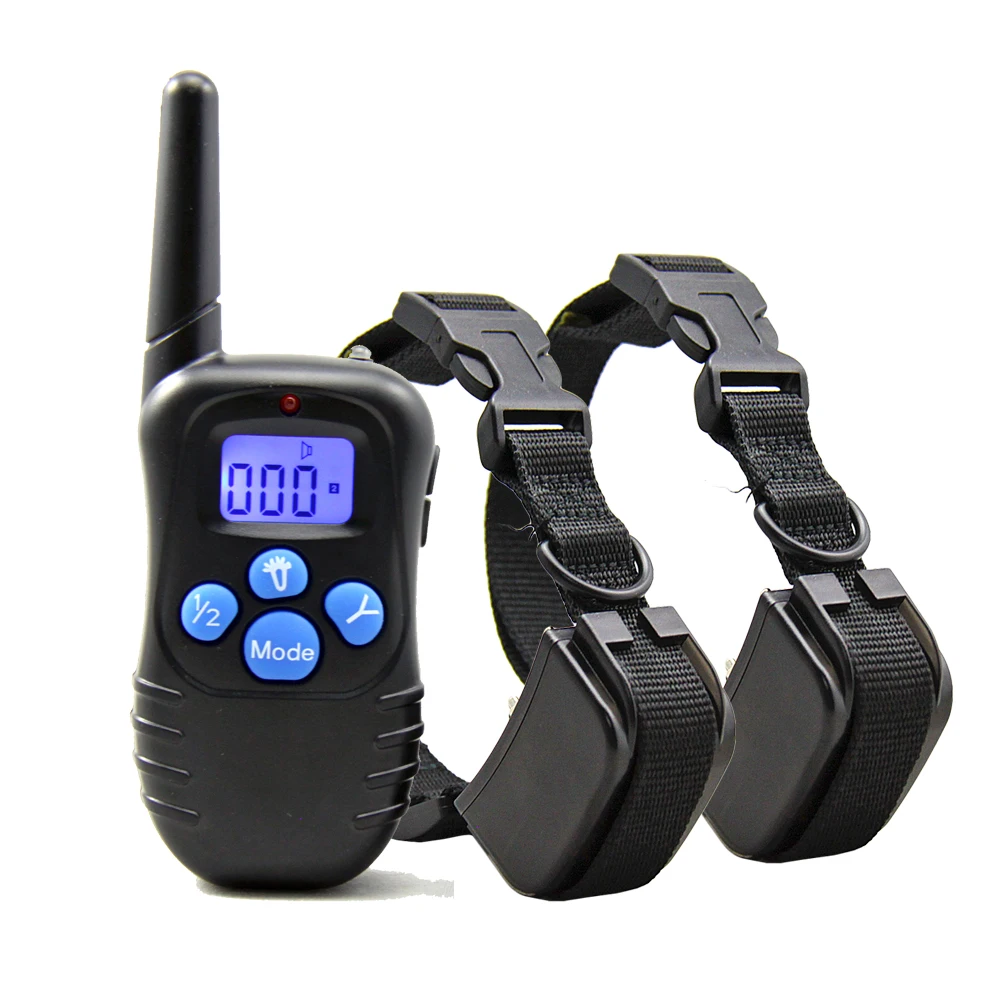
Positive reinforcement techniques are more effective when used with healthy rewards, including treats, praise and affection. While shock collars can be effective at scaring dogs when they bark, it’s less about them learning and more about becoming fearful.
#Dog trainer collar how to
Positive training for dogs is as much about training your pup as it is for you to learn how to communicate with your dog. You might not be able to hear the ultrasonic tone but your dog sure does! Keep the device out of reach of children who might mistake it for a toy or flashlight! Shock Collar Training Alternatives The ultrasonic sound interrupts whatever your dog is doing, which is why it is very important to use it ONLY when he’s doing unwanted behaviors and NOT when he’s being a good dog.

This is when you give a verbal command: “Quiet” or “Stop” or “Speak low.” Second, your dog will naturally look at you when he hears the sound. First, the device works best when you are closer to the dog. Make sure you are within 50 feet of your dog, for two very good reasons. It works by emitting a high-pitch tone when your dog does something annoying, aggressive or undesired, like barking excessively.Īs soon as your dog starts barking, you press and release the device. There is no collar or strap that your dog wears. The BarxBuddy is a handheld device that never comes in contact with your dog. Here’s how it works… How Ultrasonic Trainers Work with Positive Reinforcement By the way, the ultrasonic hand-held device nicely complements the expert training you and your dog learn from pet trainers at Petco. Instead, opt for positive reinforcement training using our signature product, The BarxBuddy. The objective to shock collars is stimulus-response: the dog approaches a boundary, you use a remote control that zaps or shocks him through his collar, and he learns not to go there.ĭoesn’t sound like fun, does it? The shock collar causes your dog to associate those behaviors with pain, discomfort and fear it doesn’t teach her to defer to you for guidance.Įven though some of the higher-end shock collars allow you to adjust the settings, we recommend against shock collars. They also use shock collars to train dogs to observe geographical boundaries in lieu of installing a physical fence or an electronic fence in their yards. Some people use shock collars to train dogs to stop unwanted behaviors, such as excessive barking, jumping on guests, and ignoring recall commands. In fact, you can use certain devices to distract a dog (rather than punish) while they’re doing unwanted behaviors (barking like a banshee, for example) and immediately follow up with a verbal command (“quiet!”) and a reward (treats, belly rubs, kind words, and kisses). That said, not all aversive training is bad, cruel or harmful. Indeed, shock collars have been a source of controversy among dog lovers, dog trainers, and dog experts since they were introduced in the mid-20th century ( according to this entry on Wikipedia). The company went on to say that there are many alternatives to training dogs that don’t inflict pain or discomfort on them. And, they’ve removed shock collars from their shelves, saying, “ Petco no longer sells shock collars operated by a person with a remote in hand.” The retailer offers in-store and online training classes that you can do one-on-one with your dog and a trainer or in a group setting. Petco launched this campaign to promote healthy training for dogs that reinforce good behaviors through rewards, rather than punish dogs to stop unwanted (or bad) behaviors, also known as aversive training. Here is a short video message from Petco’s national dog training manager about positive reinforcement dog training:

We love it! Positive-reinforcement training is exactly what we recommend in our “ Train, Treat, Repeat” approach to dog training. A campaign called “Stop the Shock” has been making its way through social media and email inboxes in an effort to educate dog owners about alternative and humane ways to train their pets.


 0 kommentar(er)
0 kommentar(er)
